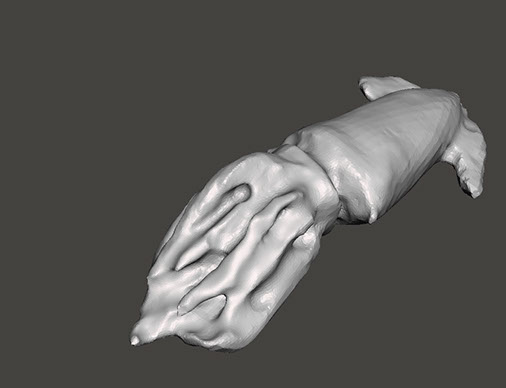Species: Abraliopsis Felis (Squid)
Student: Allison Watts
Information:
Abraliopis Felis, or squid, is a special type of zooplankton, as they are fairly protected from human impact. This is why there seems to be very little information regarding their specific livelihoods. They are seen to envelop cool-deep waters in the Northwest Pacific and the California current in the Eastern Pacific. With this wide distribution, and absence of human impact, there is no concern for the livelihood of these squid. These species are full grown at approximately 1.5 mm in length, and feed at night time in the upper waters. It is known to feed on small fish, algae, and crustaceans, while it’s predators include fishes, squids, marine mammals, and sea birds. This squid, along with many other different zooplankton are at the base of our own ecosystem. Zooplankton as a whole contribute substantial nutrients to the food chain. Algae contains chlorophyll that traps light from the sun to create energy through photosynthesis. When zooplankton consume algae it encourages new algea growth, while providing energy in the form of nutrients. These nutrients are transferred up the food chain to larger predators and are an important part of the natural ecosystem. Not only do zooplankton add enormous nutrition value to the entire aquatic food chain, they are also a huge indicator for the health of bodies of water. Known to be very sensitive to changes in aquatic ecosystems, Zooplankton and Phytoplankton are good indicators of change in natural ecosystems. Zooplankton are known to change in size and distribution, based on the nutrient amounts in water bodies. Zooplankton are a vital component of our worlds aquatic environment, we need to make larger efforts to study them, as well as other plankton, and find solutions to preserve our marine life.
